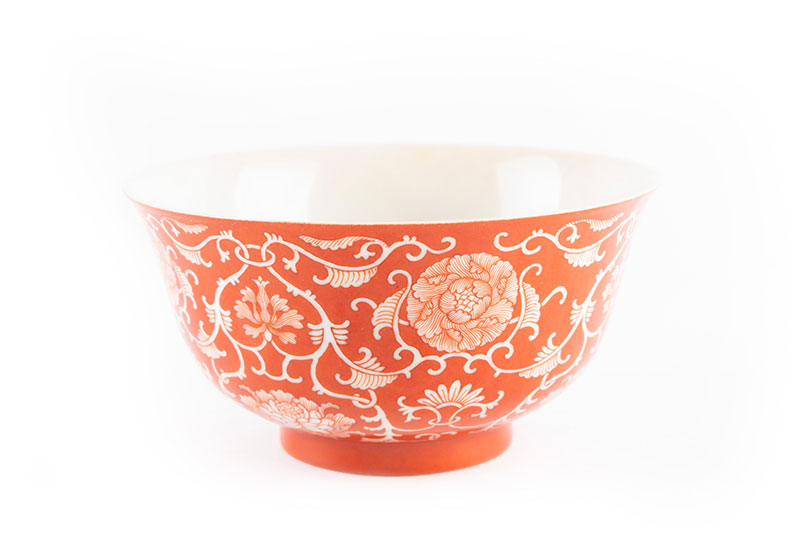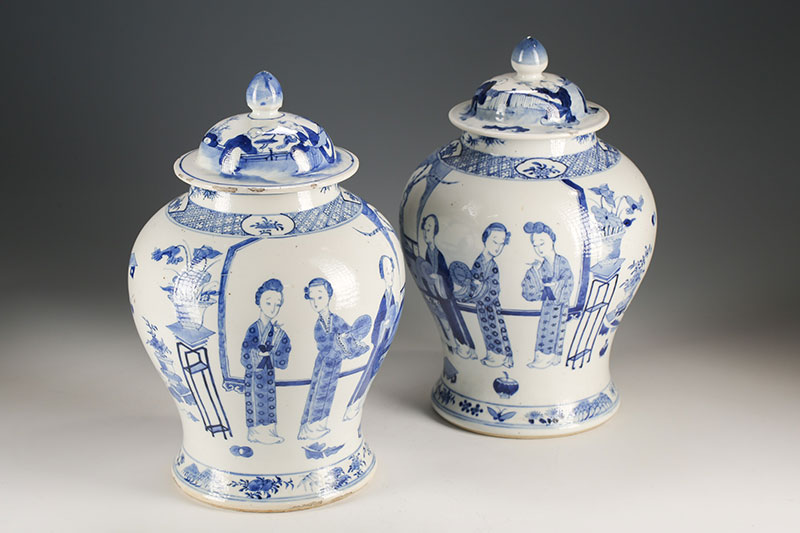How to Identify Late Qing Dynasty Chinese Porcelain
A guide to some key aspects to consider when examining Chinese porcelain of this era
17/04/2024
Chinese porcelain from the late Qing dynasty (1644–1912) was a time of development and refinements in both the potting of porcelain and glaze technology. It saw the use of a greater range of thinner more refined pieces with new glittering vibrant coloured glazes and enamels that captivated the world with their beauty.
Here we have put together a brief guide to some key aspects to consider when examining Chinese porcelain of this era. However, be aware that this is only the tip of the proverbial iceberg. Indeed, we would always recommend contacting an expert if you are considering the value of Chinese porcelain that you believe may be Qing dynasty, especially if it is with a view to selling.
Markings and Inscriptions: Some late Qing porcelain pieces bear official imperial marks. These marks were applied during specific reigns and can provide valuable information about the period. It would be irresponsible to suggest all reign marks prove either date or Imperial ownership and it is fair to say that a large percentage of the reign marks applied to late Qing dynasty porcelain is at best “Hommage” to a greater age of manufacture. At worst, these marks can just be bogus to infer great age or Imperial connotations. It is still interesting to look for reign marks such as “Da Qing Qianlong Nian Zhi” (Made during the Qianlong Emperor’s reign) or “Da Qing Guangxu Nian Zhi” (Made during the Guangxu Emperor’s reign). Many studios and kilns produced porcelain during this era. Familiarise yourself with the marks associated with renowned studios like Jingdezhen. Studio marks often include the name of the studio, the artist, and sometimes additional symbols.
Style and Decoration: Familiarise yourself with Period Styles. Late Qing porcelain reflects the prevailing artistic styles of its time. Familiarise yourself with the aesthetics of different periods, such as the colourful Famille Rose palette during the Qianlong reign or the simpler blue-and-white designs of the Kangxi period. Pay attention to decorative motifs and themes. For example, dragons, phoenixes, and auspicious symbols were commonly used during the Qing dynasty. The presence of specific motifs can hint at the period.
A pair of Chinese blue and white vases and covers
Glaze and Firing Techniques: Different glazes were popular during various Qing periods. Famille verte, Famille rose, and celadon glazes were prevalent. Observe the glaze colour, texture, and consistency. Crackle patterns (fine cracks in the glaze) can indicate age. Some Qing pieces intentionally created crackles, while others developed them over time, they were sometimes glazed in such a way as to create a fine network of glaze cracks to give the appearance of age.
Base and Foot Rim: Examine the foot rim. Early Qing porcelain often has a rounded or slightly concave foot rim, while later pieces may have a straighter, more flattened rim. A recessed base (sunken centre) is typical of late Qing porcelain. Earlier pieces may have a flat base.
Patina and Wear: Observe the patina—the natural aging process that affects any object of age including porcelain. A genuine antique piece will have subtle wear, scratches, and discoloration. Look for wear patterns on the base, rim, and handles. Frequent use leaves distinct marks.
A Chinese Famile Rose circular porcelain hunting punch bowl
Familiarisation: If you do not already have a collection, a great way to familiarise yourself with Chinese porcelain is to obtain a “Study Collection” of your own. This only need comprise good items that are slightly damaged pieces, which can be acquired for literally a few pounds. You can then handle and scrutinise the porcelain over time in detail to build up a feel for the item. This will help you to recognise other genuine Chinese porcelain in the future.
Reference: Visit Libraries, buy relevant books, and consult online reputable internet sites and forums. Since the internet revolution/evolution information is more readily available than ever before, however, this must be tempered with a warning about forums and opinions therein – which are after all, just an opinion.
Seek expert advice: Ultimately, when in doubt, seek advice from professional valuers or reputable authorities. Sometimes major museums will offer a free opinion of age but won’t usually comment on value of the item(s). They can provide insights based on their experience and knowledge and access to a wealth of reference.
Read more
How do I know if my Chinese Porcelain is Valuable?
Do you believe that you may have Qing dynasty Chinese porcelain? Are you are considering selling?
With a global audience of over 10 million, Dawsons can secure the best prices at auction.


